Mycoses of the skin are common.They develop as a result of infection with anthropophilic and zooanthropophilic fungi.You can become infected by personal contact by visiting public baths and saunas, swimming pools and gyms.Fungal pathologies have characteristic clinical manifestations, but not everyone knows what foot fungus looks like, so few people seek medical help in the initial stages.This contributes to the spread of infection.
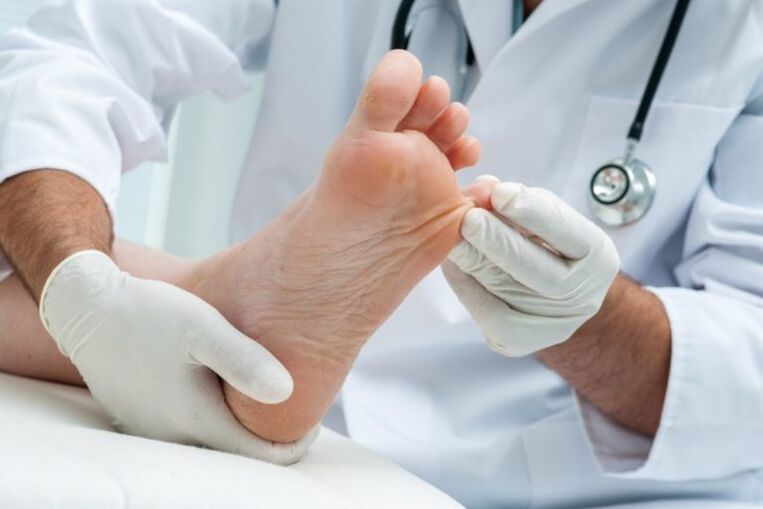
Symptoms of skin lesions on the toes
The initial changes caused by a fungal infection are hardly noticeable: they do not cause pathological changes in the affected area and do not cause discomfort.With a strong immune system, the infection at this stage can subside on its own;with the reduction of the body's defenses, it will develop and move to the next stage.At this stage, floury separations are formed in the interdigital area.The skin becomes red, dry and cracked.This process is accompanied by severe itching.Feet and heels have a healthy appearance.
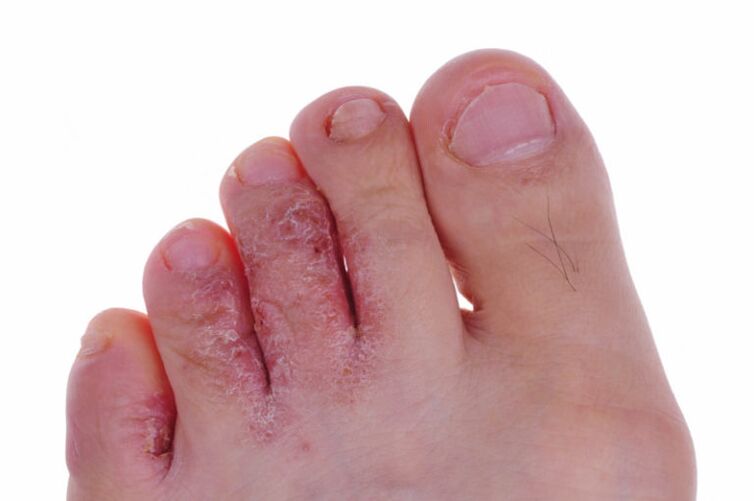
Symptoms of toenail fungus infection
The affected nails look specific, so it is not difficult to recognize the beginning of the infection.The pathological process develops according to the following scenario:
- The nail plates thicken, their color changes: the pale pink shade disappears, and a yellowish-gray color appears.
- A gap appears between the stock and the plate.
- The nail plate gradually begins to peel off, its edges become brittle.They are collapsing and gradually collapsing.
- Severe itching occurs in the affected area.It distracts you from your daily activities.
- The skin between the fingers develops irritation and redness, followed by painful cracks.
- The affected area has an unpleasant sour smell.
It becomes difficult to trim nails with regular nail clippers.They cannot be processed with a nail file or special tweezers: the plates fall apart.
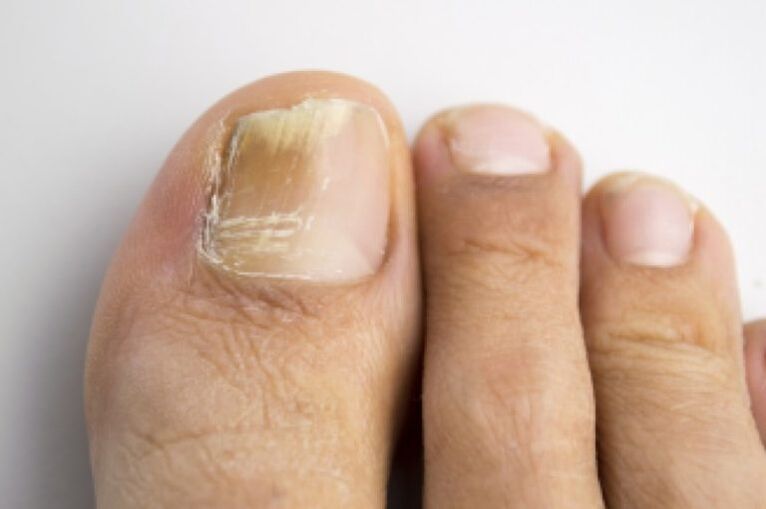
Symptoms of foot fungus
It is more difficult to determine the signs of foot fungus on your own.The development of infection causes formations on the sole of the foot that look like blisters.The appearance of other symptoms is related to which form of the disease is progressing.
It all starts with the squamous form.At this stage, the infection spreads to the entire sole.The skin on it becomes rough and inflamed, begins to actively peel and is very itchy.From the outside, the foot looks like the result of a lack of regular pedicures (unkempt).
Then a hyperkeratotic form develops.During its flow, gray thickenings are formed on the arches.They peel a lot at the edges.Deep cracks appear in place of old blisters.This process causes severe pain.Doctors call this phenomenon "moccasin foot".If the sole of the affected foot is viewed from above, it appears that a thick yellow-gray insole is glued to it.The fungal infection spreads to the interdigital space and nails.They change color, peel and collapse.
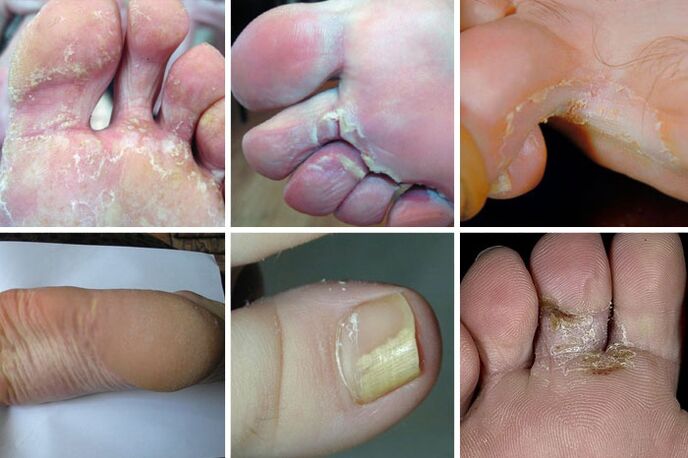
Dyshidrotic form.It is characterized by the appearance of blisters filled with cloudy liquid on the skin of the feet.This becomes possible only in advanced forms of infection.When the bubbles collapse, weepy erosions appear in their place, constantly leaking.Pathogenic bacteria easily penetrate open wounds.Secondary infection significantly worsens the patient's condition;in this case, it is very difficult to diagnose a fungal infection by external manifestations: the symptoms are similar to the clinical picture of eczema or psoriasis.
Clinical signs of the fungus according to the stage of the disease
From the moment of infection to the appearance of the first symptoms, it can take 3-14 days.The duration of the incubation period largely depends on the type of fungus that caused the characteristic symptoms (yeast-like fungi, mold or Candida), and on the state of the immune system.
In its development, a fungal infection goes through three stages:
- In the initial stage, redness of the affected area, dry skin and peeling are observed.The patient feels a slight itch.
- The middle stage is characterized by the spread of the infection to the entire foot.
- In advanced forms, damage to the nail plates is observed, the skin of the feet becomes covered with cracks, and the stratum corneum separates in large layers.
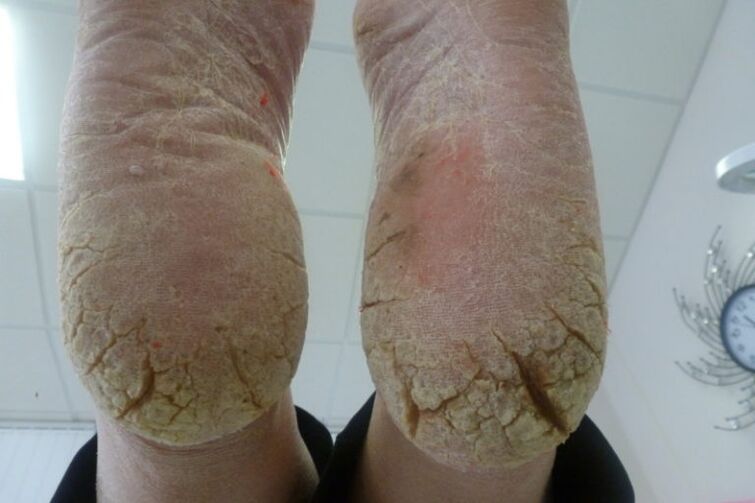
If there is no etiotropic treatment, the infection goes into a chronic phase.It is characterized by alternating remissions and exacerbations.
Differential diagnosis
The diagnosis of the disease begins with an examination of the feet by a dermatologist and taking an anamnesis.Based on their results, the doctor prescribes additional laboratory tests.
Must be done:
- Scraping from the affected area and subsequent microscopy (with its help, the fungal nature of the infection is confirmed).
- Sowing the extracted biological material in special nutrient media.Colonies of pathogenic microorganisms grown in this way make it possible to identify the causative agent of the disease and determine its sensitivity to modern antifungal drugs.Based on this laboratory test, a drug treatment regimen is created.
Fungal skin infections must be differentiated from vitiligo, seborrhea, psoriasis, syphilitic leukoderma, and neurodermatitis.Skin examination under a Woods lamp and PCR are used for these purposes.
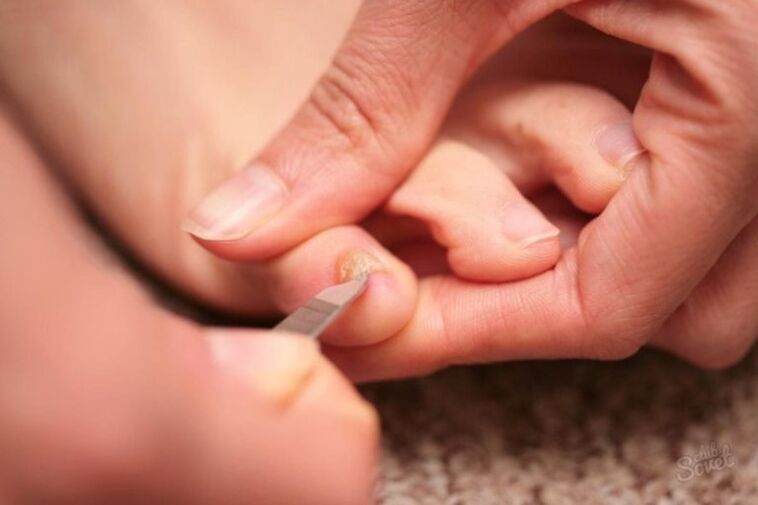
How to fight foot fungus
The following are used to control a fungal infection:
- antifungal ointments;
- antimycotics in tablets;
- traditional medicine.
Ointments are applied to the affected areas twice a day;first, the skin of the feet must be steamed and cleaned of the horny layer.The duration of taking the tablets is determined by the attending physician.As a rule, the course of treatment of the initial stages of the infection does not last longer than a month;advanced forms are treated within six months.Traditional medicine can significantly speed up the healing process.Doctors recommend their patients to take care of the following prescriptions.
Baths with vinegar and hydrogen peroxide.It is necessary to pour water at a temperature of 37 degrees into the basin, add 20 grams of table vinegar, then put your feet in the water and heat them for about twenty minutes.After that, you need to remove the stratum corneum with a pumice stone, wipe your feet and coat the affected areas of the skin with a 3% hydrogen peroxide solution.At the end of the procedure, the affected areas are smeared with an antifungal cream prescribed by the doctor.
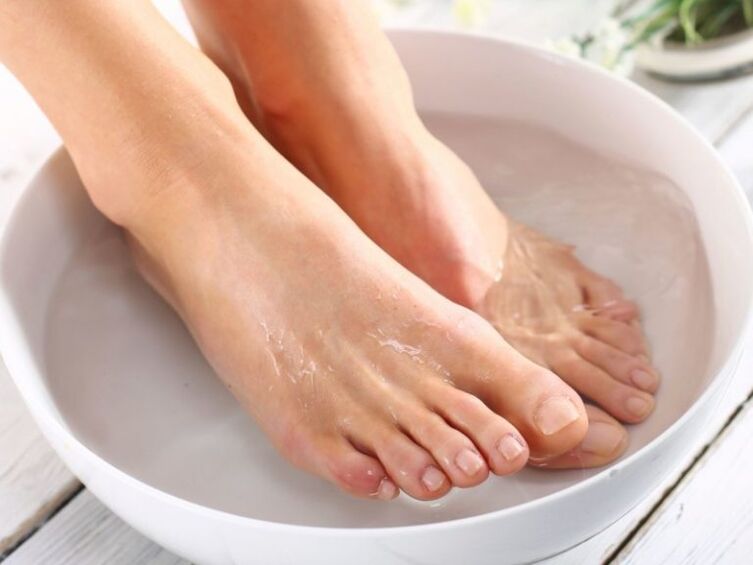
Salt baths and celandine juice.The feet are first steamed in a saline solution (a teaspoon per liter of water), and then lubricated with celandine juice prepared from fresh leaves and grass stems.The procedure ends with the application of an antifungal drug.
Soda baths (20 grams of powder per two liters of water) can relieve inflammation and promote healing of ulcers.The feet are steamed for fifteen minutes, wiped with a towel and treated with etiotropic ointment.
During the treatment, it is important to thoroughly disinfect all surfaces with which painful feet come into contact (shoes, clothes, bedding).After treating the affected areas of the skin, you must wash your hands thoroughly, and then treat them with any liquid antiseptic.Violation of the number of drugs taken and their dosage will lead to increased sensitivity of the pathogenic microflora, to the need to extend the therapy and change tablets and ointments.
In order to prevent relapses, it is important to prevent reinfection.Wear only dry shoes, choose socks made of natural fabrics and use only personal pedicure accessories.

















